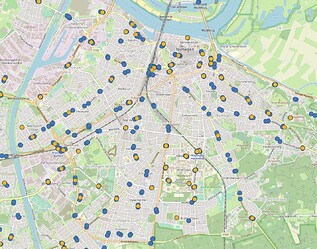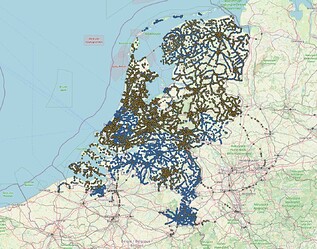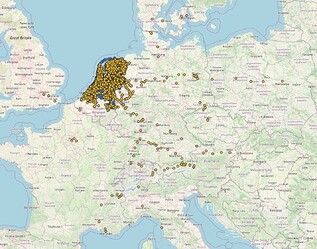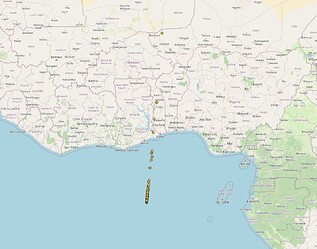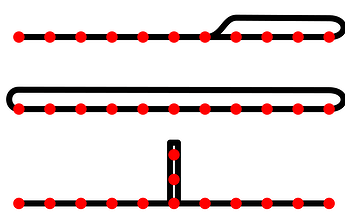Ik zou graag willen dat OSM applicaties ook OV-navigatie kunnen - inclusief de vertrektijden. Uit eerdere discussies is het mij duidelijk dat vertrektijden te grote hoeveelheid data is die zeer volatiel is, dat dit nooit in de OSM database zal komen.
Ik denk dus dat een koppeling met GTFS feeds noodzakelijk is om dit voor elkaar te krijgen. Andersom helpt dit ook met het up-to-date houden van busroutes door tools als PTNA
Een probleem voor een goede koppeling is volgens mij het ontbreken van een eenduidige tagging scheme. Issues die de Wiki aangeeft zijn: twee gebruikte namespaces: gtfs_* en gtfs:*, en hoe om te gaan met overlappende feeds.
Ik heb wel een idee hoe zo’n scheme eruit zou kunnen zien, maar weet niet hoe het proces om zoiets voor te stellen gaat.
Samenvatting van wat ik zou voorstellen
- gebruik van de
gtfs:*namespace, zoals nu gebruikt door PTNA. - Alle
gtfs_*automatisch omtaggen. Vind ik niet problematisch want ik zie geen interpretatieverschil in tags. Zal wel even gekeken moeten worden of er data consumers zijn die degtfs_*tags gebruiken. - één relatie voor elke feed die alle stops, route-masters en routes bevat met een corresponderende rol.
- Deze relatie bevat in ieder geval
gtfs:feed_url, en eenref - Nuttig lijkt me ook een
gtfs:license=CC0ofzo, weet niet wat hiervoor handig is. - stops, route-masters en routes bevatten de juiste
gtfs:stop_id/gtfs:route_id/gtfs:shape_id/ … zoals nu omschreven in de Wiki. - In het geval van meerdere feeds, worden de id’s uit de verschillende feeds gescheiden door
;. Het aantal id’s moet hetzelfde zijn als het aantal feed-relaties waar het onderdeel van is. - De volgorde van de id’s is de volgorde van de ref’s in de feed-relaties (lexicografisch volgens ASCII of UTF8 ofzo?)
- Mocht een object een bepaald soort id in een feed niet hebben en in de ander wel, dan wordt dat stuk leeggelaten; dus bijvoorbeeld
gtfs:shape_id=;503ofgtfs:trip_id:sample=124;;
Een ander probleem is dat we in Nederland geen gtfs id’s hebben in OSM. In Nederland hebben we een GTFS feed van al het openbaar vervoer, zie gtfs.ovapi.nl
Voor zover ik kan zien is dit open data
https://gtfs.ovapi.nl/README
LICENSE
You are free to use this data, but there is no servicelevelagreement (best-effort) nor are you allowed to say you represent or impersonate any of the
transit agencies listed here.
Gebaseerd op NDOV data, waar staat:
NDOV Loket
Reisinformatie is in Nederland beschikbaar als open data met CC0 vrijwaring. Door overheden en vervoerders is afstand gedaan van auteursrecht en databankenrecht.
(Dit beantwoord naar mijn idee @ToniE 's vraag in Public_transport:version=2 - #33 by ToniE)
Wat zijn jullie ideën hierover?

